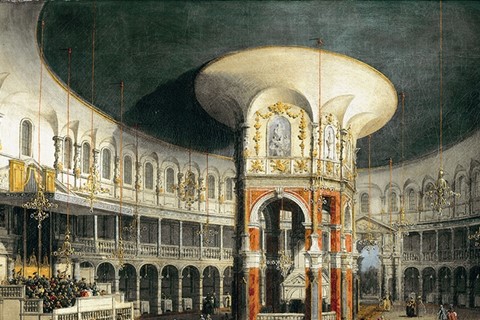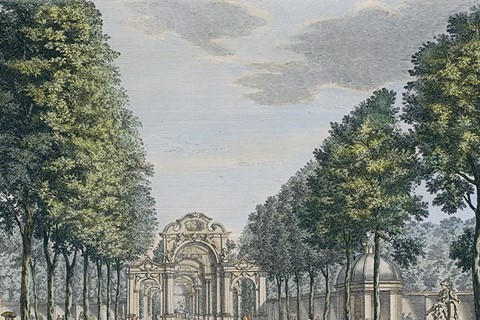A colossal new book about the Vauxhall Pleasure Gardens, the most famous of their sort to have existed in Britain, traces the attraction’s two hundred year history, from their beginnings in the 1600s, through to their Georgian heyday...

“[It] is peculiarly adapted to the taste of the English nation; there being a mixture of curious shew – gay exhibition – musick – vocal and instrumental, not too refined for the general ear – for all which only a shilling is paid – and, though last not least, good eating and drinking for those who choose to purchase that regale.” — Dr Johnson, quoted by Boswell (1776)
A colossal new book about the Vauxhall Pleasure Gardens, the most famous of their sort to have ever existed in Britain, traces the attraction’s two hundred year history, from their beginnings in the 1600s, through to their Georgian heyday, and eventual closure in 1859. In Vauxhall Gardens: A History, authors David Coke and Alan Borg have collated sources ranging from official histories, personal accounts, press cuttings, marketing materials, popular songs, drawings, paintings, and maps to create a vivid, entertaining and detailed portrait of one of London’s most heavily visited attractions.
Famous diarist Samuel Pepys, writing in the mid-17th century, refers several times to the new “spring gardens” at “Fox-hall”, and it wasn’t long before their promenades and colonnades started to pull in the crowds, thousands of men and women each evening, looking for a place to stroll, sup, hear music, or catch some light entertainment.
The authors write: “Vauxhall Gardens provided a counterblast to the filth, noise and violence of London’s streets; they offered a place permitting social freedoms that would have been impossible elsewhere, but in a very particular and strictly controlled setting. Vauxhall enhanced the sociability of Londoners, giving them an outlet for youthful rebellion; and it fostered in visitors a pride in their country and their culture."
"Vauxhall enhanced the sociability of Londoners, giving them an outlet for youthful rebellion; and it fostered in visitors a pride in their country and their culture"
Despite their popularity, with a reputation for attracting prostitution, drunkenness and other types of salacious behaviour – there were the so-called ‘dark walks’ down the tree-lined paths – the gardens were not considered by all to be an appropriate destination for polite society. Yet it was this tension between their status as mass entertainment and their reputation skirting the edge of respectability that kept visitors from all walks of life – including royals – coming back for more. Indeed the gardens were one of the few public places where a shared experience between the sexes and classes could take place. And, as the authors claim, it gave reticent middle class Londoners, who were not prone to entertaining at home, the opportunity to meet in large groups.
Once the home of pavilions and private supper booths, art shows and free roaming performers, all that now remains of the gardens’ splendour is a small public park and the Vauxhall city farm. Significantly, the back entrances to many of the area’s infamous railway arch nightclubs feed out into the green – still called the Pleasure Gardens – a hint that you can still find mass entertainment and bawdy behaviour in Vauxhall, it’s just gone indoors.
Vauxhall Gardens: A History is published for the Paul Mellon Centre for Studies in British Art by Yale University Press.
Text by Ananda Pellerin
Ananda Pellerin is a London-based writer and regular contributor to anothermag.com. She also lives in Vauxhall.


